The Picasso Estate Collection
According to Charles A. Riley II, PHD, art historian, professor, author, and curator, when Pablo Picasso died in 1973, he left a treasure trove of artwork to his one legitimate son, Paulo (or Paul).
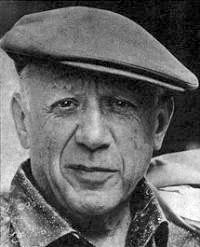
1881–1973
Pablo Picasso is unquestionably one of the most famous artists of the 20th century. Few artists have had a greater influence on modern art or have changed the history of art more profoundly.
Picasso transformed the art world by co-founding the Cubist movement and developing a variety of styles and techniques that continue to provoke viewers, scholars, and artists alike. His seemingly infinite creativity resulted in more than 26,000 cataloged works of art.
Thanks to his revolutionary approach to art, Picasso remains one of the world’s most renowned artists and best-known figures of his century.
READ MORE +Born in Malaga, Spain on October 25, 1881, Picasso’s legal name is Pablo Diego José Francisco de Paula Juan Nepomuceno María de los Remedios Cipriano de la Santísima Trinidad Ruiz y Picasso. His mother claimed that his first word was “piz,” a shortened form of “lápiz,” which is Spanish for “pencil.”
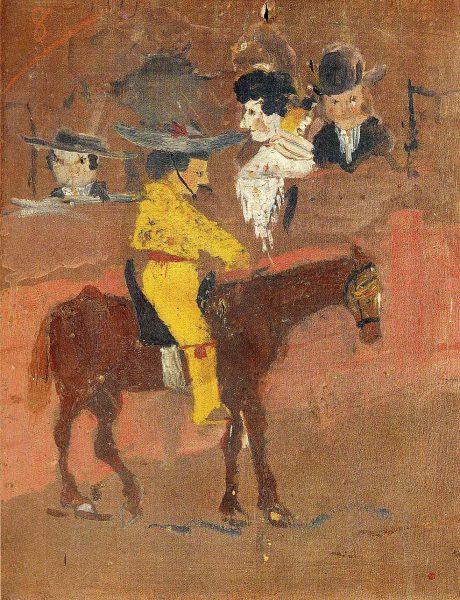
“The Picador” (1889-90), Pablo Picasso (Public domain. Image courtesy of WikiArt)
Picasso received his first drawing lessons from his father, an art teacher, at the age of 7. In 1895, after the death of his sister, his family moved to Barcelona. The young Picasso easily passed the entry examination to the famous Barcelona Academy of Arts after completing the one-month qualifying exam in only a week. It is rumored that his father was so overwhelmed by Picasso’s abilities that he proclaimed he decided to give up painting.
In 1899, Picasso frequented a cafe called Els Quatre Gats, part of the artistic center of Barcelona. The café served as the venue for his first-ever exhibition. A year later, Picasso attended the prestigious Real Academia de Bellas Artes de San Fernando in Madrid, though he disliked the formal instruction and eventually stopped attending.
Picasso took his first trip to Paris in 1900, where journalist and poet Max Jacobs helped him acclimate to the country. In 1901, the artist started to sign his works as “Picasso”— using his mother’s maiden name, instead of “Pablo Ruiz y Picasso.” It is around this time his acclaimed Blue Period of art began. He ultimately moved to Paris in 1904.
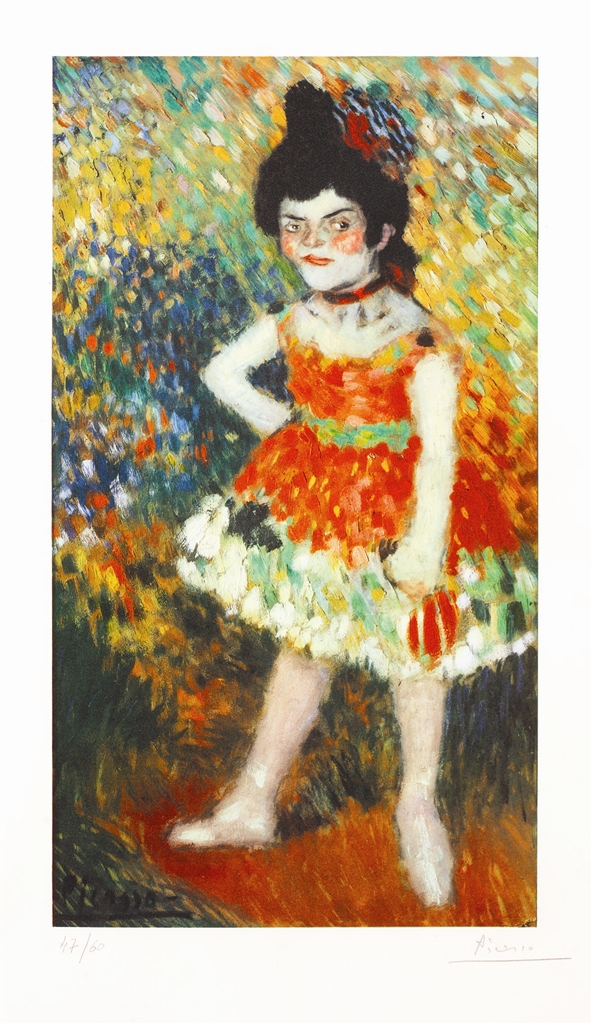
“Danseuse Naine (Dwarf Dancer)” (1901), Pablo Picasso
In 1907, during what is considered his African Period, Picasso created the painting that would, in essence, change modern art: “Les Demoiselles d’Avignon.” While fellow artist Henri Matisse regarded the artwork as a hoax, it led to Picasso’s first collaboration with the artist Georges Braque, a partnership that lasted into the 1920s and resulted in the creation of Cubism.
The 1920s were important years in the development of Picasso’s art and fame. The decade saw Picasso designing theater sets and painting in Cubist, neoclassical, and Surrealist styles. In 1937, fascists horrified the world with the bombing of the civilian town of Guernica, Spain, during the Spanish Civil War. Picasso was deeply affected by the carnage and responded by creating arguably his most famous masterpiece, “Guernica.”
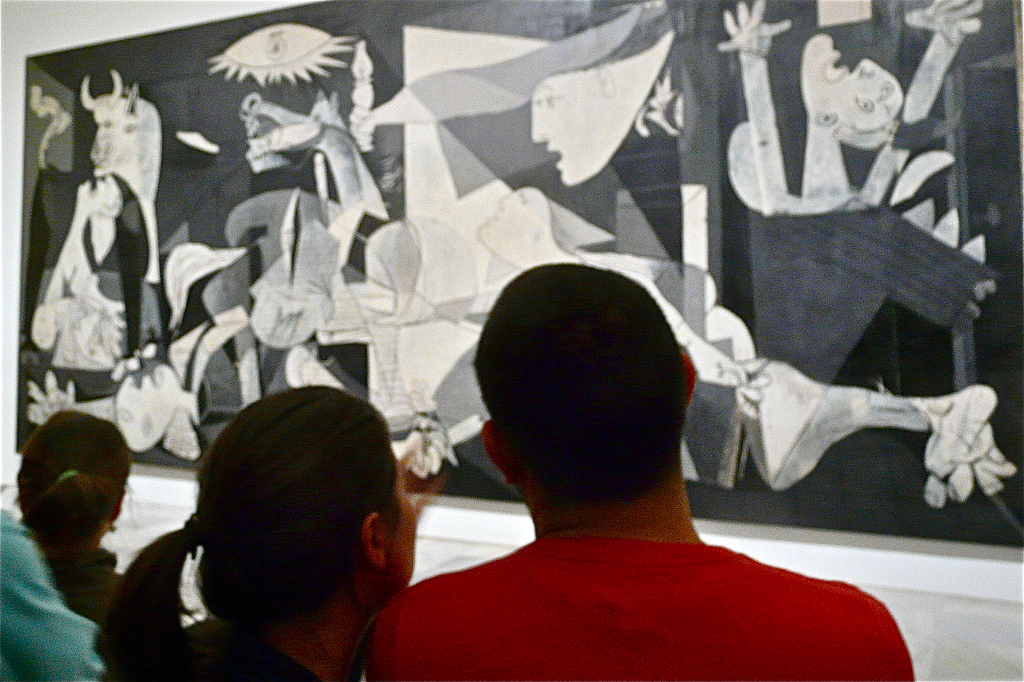
Guests to the Reina Sofia museum view “Guernica” (Photo by sanfamedia.com)
In 1939 and 1940, the Museum of Modern Art in New York held a major retrospective of Picasso’s works, introducing him to America on a new level. Picasso was living in Paris for the duration of World War II, even during the Nazi occupation of the city. The Nazis largely left Picasso alone due to his international fame, but he didn’t exhibit his artwork at the time because his art failed to conform to Nazi ideals.
Picasso’s later years were defined by his experimentation with daring and vivid artwork, including hundreds of etchings and original ceramic works he created at the Atelier Madoura in Vallauris, France.
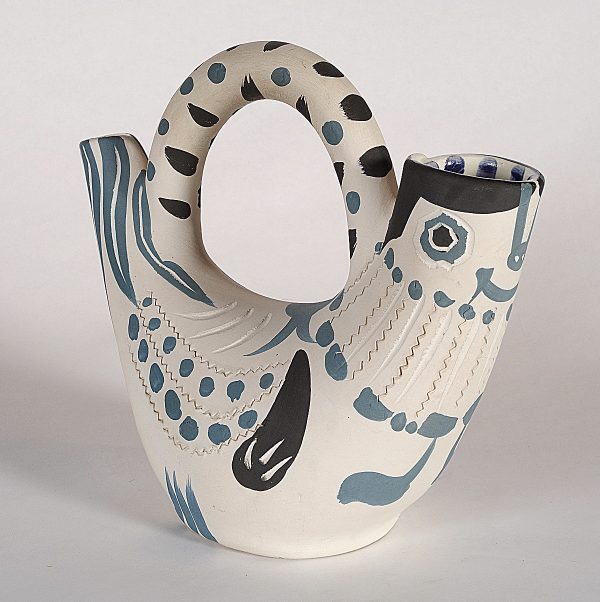
“Pichet Espagnol (Spanish Pitcher)” (1954), Pablo Picasso, A.R. 244
Picasso had multiple romantic relationships throughout his life, resulting in four children by three women. He married ballerina Olga Khokhlova in 1918, but their relationship deteriorated and they remained separated until her death in 1961. In 1927, Picasso began an affair with Marie-Therese Walter.
In 1935, Picasso met photographer Dora Maar, who became his companion and lover for nine years. In 1944, Picasso began a relationship with artist Francoise Gilot. While still with Gilot, Picasso had a brief affair with filmmaker Genevieve Laporte. Gilot broke off her relationship with Picasso in 1953. Picasso later met Jacqueline Roque, who became his wife in 1961 and remained with him for the rest of his life.
Picasso died on April 8, 1973 in Mougins, France at the age of 91.
Throughout his artistic life, lasting more than 75 years, Picasso created tens of thousands of works, including paintings, drawings, sculpture, original lithographs, etchings, linoleum cuts, and ceramics.
“When you come to think of it, I am probably a painter without style,” Picasso once said. “‘Style’ is often something that ties the artist down and makes him look at things in one particular way, the same technique, the same formulas, year after year, sometimes for a whole lifetime.”
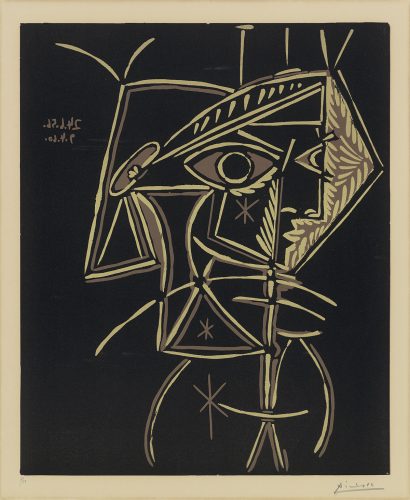
“Tete de Femme (also known as ‘Buste de Femme: Jacqueline’)” (1959), Pablo Picasso
Picasso’s art is commonly categorized into several distinct periods:
Picasso settled definitively in Paris where he rented a studio in the “Bateau Lavoir.” This is the time when he created his “Blue Period” works, named for their monochromatic tonality and somber content. He later said he was influenced by the suicide of his friend, Carlos Casagemas.
This short period in Picasso’s career is marked by bright colors, notably pink and red tones. Picasso’s subjects expanded to include actors, harlequins, and acrobats. Unlike his earlier and later works, Picasso’s art during this time is more representational, including real forms, dimensions, and spaces.
Inspired by African artifacts he saw at an exhibition in June 1907, Picasso was inspired to simplify the shapes in his art. Faces began to resemble ritual masks, and he utilized rough shading techniques to make his backgrounds as substantial as his characters. The first inklings of his famous Cubism can be seen in his distorted shapes and figures of this period.
Picasso, along with Braque, used monochrome colors to take apart objects and analyze them in terms of fragmented shapes. This was coined as “Analytic Cubism.” Picasso said that, in Cubism, “The viewer sees a painting in parts; one fragment at a time: for example, the head, but not the body, if it is a portrait; or eyes, but not the nose or the mouth. Consequently, everything is always right.”
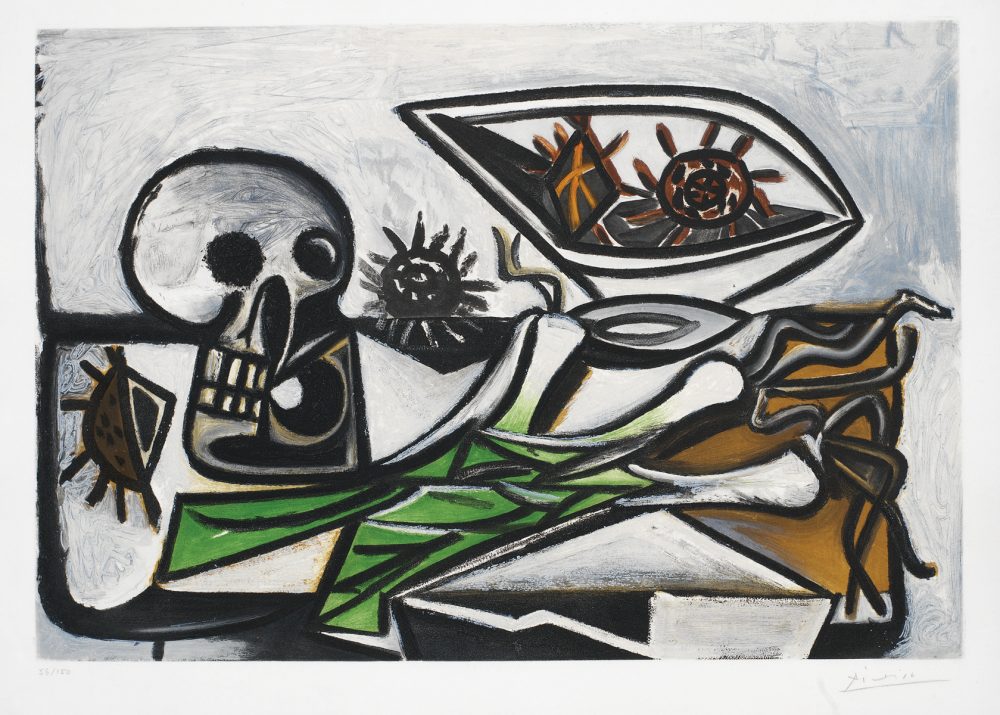
“Nature Morte au Crane” (c. 1950), Pablo Picasso (after)
Around 1915, Picasso explored Cubism further, painting objects in a highly geometric and minimalist style. This subset of the movement became known as “Crystal Cubism.”
In 1917, Picasso took his first trip to Italy, and combined with the demand from his wife that his portrait of her be recognizable, Picasso returned to a more figurative and realist style. Many of Picasso’s works during this time draw influence from the art of Raphael and Michelangelo.
In 1925, Picasso featured some of his Cubist works at the first-ever Surrealist exhibition. As a result, Picasso began to paint objects “as I feel them, not as I see them.” He never fully embraced Surrealism’s tenants, but his paintings took on qualities of Surrealism as a form of self-expression.
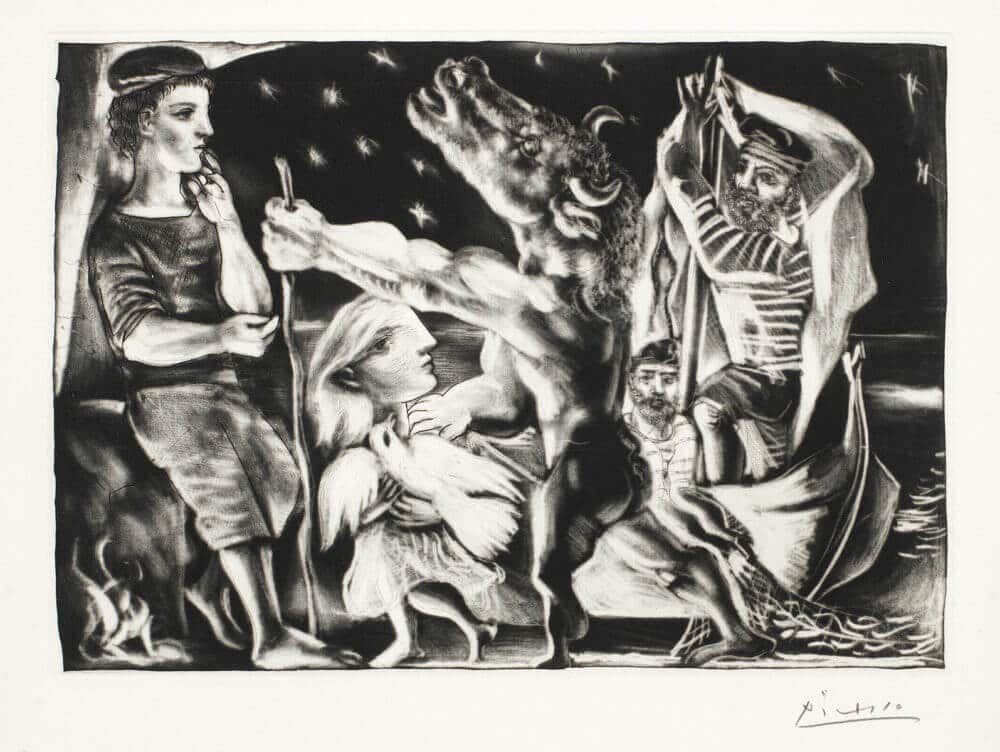
“Minotaure Aveugle Guide Par une Fillette Dans la Nuit” (1934), Pablo Picasso. From The Suite Vollard B. 225; Ba. 437
Picasso also became one of the most important printmakers of all time. He was never content to use any media in its traditional way and revolutionized many of the graphic media he employed. This included the creation of the 100 copper plates for his Vollard Suite etchings, his linocuts, his sculpture and ceramics, and the various printmaking mediums he employed in the 347 etchings of his “347 Series.”
for breaking news, artist updates, and special sale offers